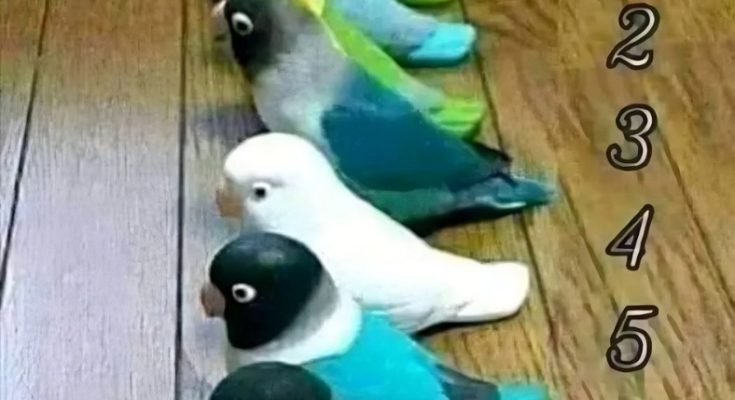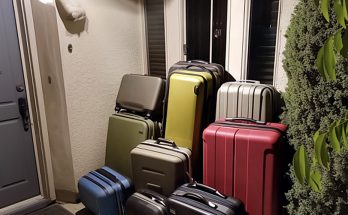Visual puzzles have a way of captivating our attention, challenging us to find the hidden truth among deceivingly similar objects. One such viral challenge asks a simple yet tricky question: “Which one is the real bird?” With several birds lined up, distinguishing the genuine one from its toy counterparts is harder than it seems. Are you ready to test your observation skills? Let’s dive in and solve this puzzle step by step.

Why Do Visual Puzzles Capture Our Attention?
Visual puzzles like this one are more than just entertaining—they tap into our brain’s need for pattern recognition and logical reasoning. They challenge us to:
- Focus on Details: Spotting differences demands a sharp eye for subtle variations.
- Analyze Context: Observing how objects interact with their surroundings is key.
- Engage Critical Thinking: Breaking down the puzzle into smaller steps helps us arrive at the solution.
Beyond the fun, these puzzles train our minds to think critically and improve cognitive skills. Now, let’s uncover the tricks behind this particular challenge.
Common Pitfalls When Solving Puzzles Like This
Before jumping into the solution, it’s important to understand why many people stumble on puzzles like this. Here are some common mistakes:
- Rushing the Process
Many people take a quick glance and pick the bird that “looks” real without thoroughly examining the details. - Focusing on Bright Colors
Artificial objects often have exaggerated or overly vibrant colors. This can trick the brain into assuming they’re real when they’re not. - Ignoring Texture and Detail
Real animals have unique textures, such as feathers with fine details, while toys usually have smoother or shinier surfaces. - Overlooking Shadows and Context
How the birds interact with their environment—like casting shadows or sitting on the surface—can reveal their authenticity.
A Step-by-Step Guide to Solving the Puzzle
If you’re determined to find the real bird among the toys, follow this systematic approach:
Step 1: Eliminate the Obvious Fakes
Start by identifying the most artificial-looking birds. Look for features like:
- Unnatural Colors: Bright neon shades or overly glossy surfaces are telltale signs of a toy.
- Symmetry: Toys often have perfectly symmetrical shapes, unlike real birds, which may have slight imperfections.
For example, birds with overly smooth bodies or exaggerated coloring can be ruled out quickly.
Step 2: Focus on Texture and Detailing
Zoom in on the birds and observe their texture. Here’s what to look for:
- Feathers: Real birds have intricate feather patterns, whereas toys have flat or uniform textures.
- Eyes: A real bird’s eyes have depth and a natural sheen, unlike the painted or plastic eyes of toys.
Pay close attention to Bird #4—it stands out with its realistic feather detailing and natural eye depth.
Step 3: Observe Shadows and Placement
Notice how each bird interacts with the surface it’s on. Real birds tend to have:
- Dynamic Shadows: Their shadows vary in intensity and direction, unlike the static shadows of toys.
- Natural Positioning: A real bird may lean slightly or sit at an angle, whereas toys often appear rigid.
In this puzzle, Bird #4’s shadow aligns naturally with the lighting, making it the prime candidate.
Step 4: Examine Posture and Body Language
Real birds rarely sit perfectly still or symmetrical. Look for:
- Tilted Head or Uneven Posture: These are signs of a living creature.
- Relaxed Stance: Real birds have subtle variations in their body positioning.
Bird #4 exhibits a slightly tilted posture, adding to its authenticity.
The Answer: Bird #4 Is the Real One
After carefully analyzing the image, it’s clear that Bird #4 is the genuine article. Here’s why:
- Feathers: Bird #4 shows the texture and pattern of real feathers, unlike the smooth surfaces of the toys.
- Shadow and Context: Its shadow is organic and blends naturally with the environment.
- Posture: Its relaxed stance and slightly tilted head suggest life, unlike the stiff positioning of the toys.
If you guessed Bird #4, congratulations! Your keen observation skills are impressive.

Why Visual Challenges Like This Are Good for You
While this puzzle is entertaining, it also has surprising benefits for your brain. Here’s how:
- Improves Focus
Solving puzzles trains your brain to pay attention to small details, a skill that’s useful in everyday life. - Enhances Problem-Solving Skills
Breaking down challenges into smaller steps helps you approach problems logically and effectively. - Reduces Stress
Engaging in fun activities like puzzles can help clear your mind and provide a sense of accomplishment. - Boosts Memory
Analyzing details and recalling patterns strengthen your memory and mental agility.
Tips for Mastering Visual Puzzles
Want to become a pro at solving puzzles like this? Here are some tips:
- Take Your Time: Don’t rush—examine the image thoroughly before making a decision.
- Break It Down: Focus on one aspect at a time, like texture, shadow, or posture.
- Practice Regularly: The more puzzles you solve, the better your observation skills will become.
- Stay Curious: Approach each puzzle with a sense of curiosity and an open mind.
What Did You Guess? Share Your Thoughts!
Did you correctly identify Bird #4 as the real one, or were you tricked by one of the toys? How did you approach the puzzle, and what clues helped you the most? Share your experience in the comments below—we’d love to hear your strategies!
Conclusion: Keep Challenging Your Brain
Visual puzzles like this aren’t just a test of your observation skills—they’re a fun and engaging way to exercise your brain. Whether you nailed the answer or learned from your mistakes, every challenge sharpens your mind and boosts your cognitive abilities.
So, the next time you come across a puzzle, take your time, analyze the details, and enjoy the process. And don’t forget to share this puzzle with your friends and family—let’s see if they can spot the real bird as quickly as you did!



